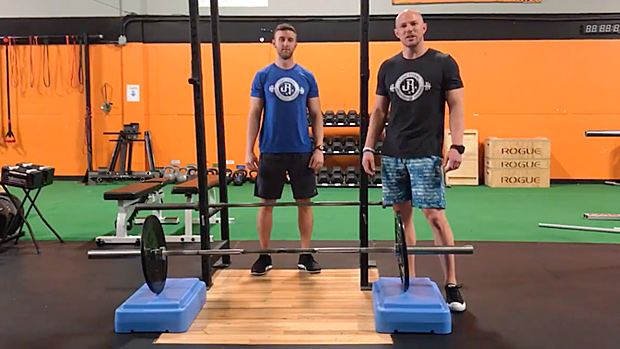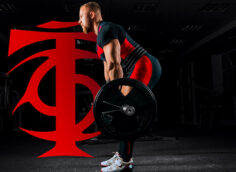Far too many lifters pull from the ground when they shouldn't be. If you have to round your back, shift your weight, and cause yourself pain just to move some iron off the floor, chances are your depth is less than ideal. To fix the problem, elevate the bar to maintain a neutral spine.
One of the most effective deadlift modifications you can make is pulling from a higher position. What position is ideal? It depends on your body, your skill level, and your goals. Not everyone is built the same, has the same goals, or experience, so why would everyone deadlift with the bar from the same height? The answer is that they shouldn't.
There's a simple test to determine your optimal pulling height: the bodyweight hinge.
The Body Weight Hinge Test
- Place your feet in your deadlift stance.
- Brace your spine into a neutral position, tense the glutes and hamstrings.
Slowly drive your hips back, maintaining a neutral spine. Keep your hands vertical to the floor at your side. - Hinge as far back as possible until you can no longer maintain spinal position.
At terminal non-compensated end range, bring your hands down to your legs. Note the height of your knuckle of the second finger relative to your leg. That's your starting point based on a bodyweight test.
This is a good place to start, but the real test is getting load on the bar at that height and monitoring your spinal position. A vast majority of people do well pulling from between 3-8 inches below the kneecap. Take the test, then try it out in training, and modify based on spinal position and stability.





